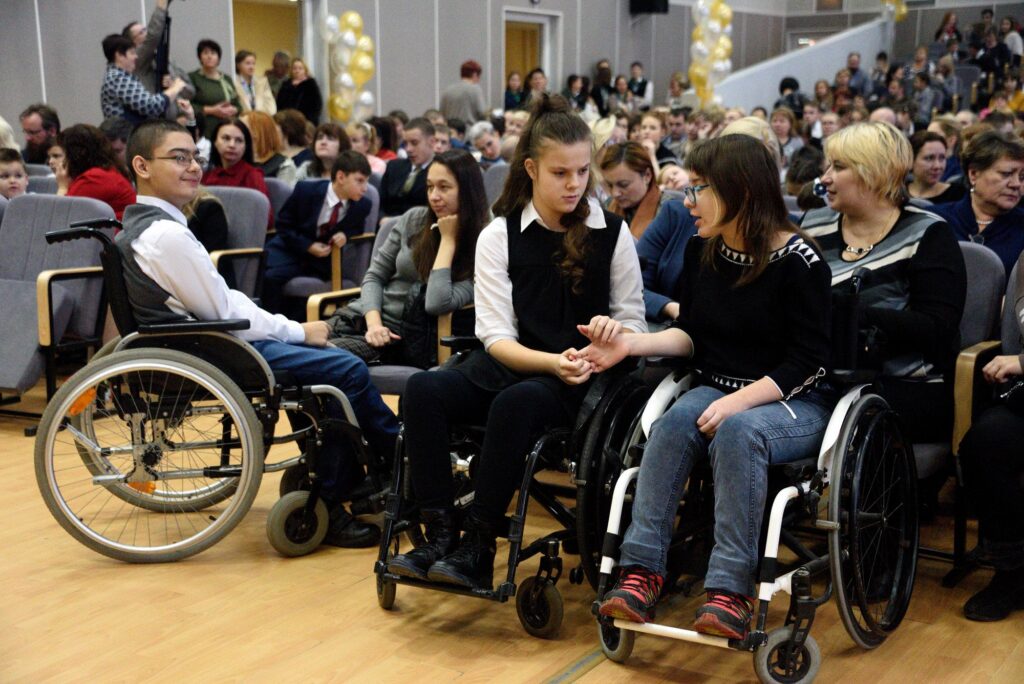
The education of children with special needs and children with disabilities is one of the basic and essential conditions for their successful socialization, their full participation in society and their effective self-realization in various professional and social activities. The programme is a comprehensive programme to assist children with special needs in mastering the basic education curriculum for primary general education.
The normative, legal and documentary basis of the Correction Programme for students at the primary general education level is: The programme of corrective work at the primary general education level is designed for a contingent of children with special needs who are studying at school. Programme objective: to ensure a systematic approach to the development of children with disabilities and to help children in this category to master the basic education curriculum of primary general education. Read more nere https://argoprep.com/blog/helping-special-needs-children-excel-in-school/
Tasks of the program:
- Identify the special educational needs of children with special needs arising from their physical and/or mental development;
- Provide individually targeted psychological, medical and pedagogical assistance to children with special needs, taking into account the specifics of their psychological and physical development and their individual capacities (in accordance with the recommendations of the psychological, medical and pedagogical commission);
- Ensure that children with disabilities are able to master the basic education curriculum of primary general education at an accessible level and are integrated into the educational institution.
The correction work program contains the following sections:
- Characteristics of the student population with disabilities and special needs.
- A system of comprehensive psychological, medical and pedagogical support for children with special needs in the educational process.
- The forms of education, the content and the plan for the implementation of individually targeted corrective measures to meet the special educational needs of children with disabilities, their integration into the educational institution and their mastery of the basic educational programme of primary general education.
- Monitoring of the dynamics of children’s development and their success in mastering the basic education programme of primary general education, adjustment of remedial measures. Description of special conditions for the education and upbringing of children with special needs.
- Description of special conditions for the education and upbringing of children with disabilities.
- Mechanism of interaction in the development and implementation of remedial actions of teachers, specialists in the field of remedial pedagogy, medical staff of educational institutions and other organizations specializing in the family and other institutions of society, which should be provided in the unity of classroom, extracurricular and extracurricular activities.
- Indicators of efficiency and effectiveness of correctional work.
Inclusive education
The school is working on an inclusive education programme. The number of children with disabilities in an inclusive school is limited – no more than 10% for the whole school and no more than three persons – in a single class (specify classes, names of students who study there).
Such education provides children with disabilities with the necessary experience of teamwork, defeats and victories, and teaches them to communicate and be friends. The presence of disabled children in need of help in children’s groups becomes a factor in the moral education of healthy children with appropriate pedagogical support.
Extra-curricular activities

The basic form of the organization of after-hours activity of schoolchildren is project activity. Inclusion of children with limited possibilities of health in design activity has special value as promotes their self-realisation in various kinds of labour, creative activity, integration into society. Project activity influences formation of personal qualities of pupils: demands display of personal value senses, shows the real attitude to business, to people, to results of work, etc.
The textbooks of the “Knowledge Planet” CMC offer various socially significant projects, among which children with disabilities can choose according to their interests and possibilities. The organization of school events presupposes that children with disabilities can participate in them on an equal footing with their peers from other classes.
Regardless of the degree of manifestation of development disorders of children with health limitations, they are included in educational, cultural-entertaining, sports and other leisure activities together with other children. Calendar of traditional school affairs and holidays.
Calendar of traditional school affairs and holidays
- September (Knowledge Day); October (Dedication to first-graders);
- November (Days of Spirituality and Culture); December (Epiphany Readings); January (Christmas); February (Patriotic Song Week);
- March (Baby Week); April (Easter); May (Slavonic Writing Day); other school affairs and holidays accepted in the educational institution.
Sports and health-improving events:
- Health Days – (time);
- “Fun Start” – (time);
- Football, chess competitions, (time); Festival “Dad, Mom and I – athletic family.
To ensure the safety and smooth movement of children with disabilities on school grounds, flat, non-slip asphalt pavements should be provided. Small level differences in the pathway should be smoothed out. The ribs of the grids on pedestrian walkways shall be perpendicular to the direction of travel and not more than 1.3 cm apart. In several places, an exit with a width of at least 90 cm shall be arranged on the curbstone of the pavement.
For this purpose, it is recommended to cover the surface of the pavement with relief strips and a bright contrasting colouring. Bright yellow, bright orange and bright red colours are considered optimal for marking.
Discribes the specialists working at the school as well as those with whom the educational institution cooperates 2Discribes the forms and content of correctional work used at the educational institution 3Homework can be carried out according to the general or auxiliary program built in accordance with the student’s capabilities.